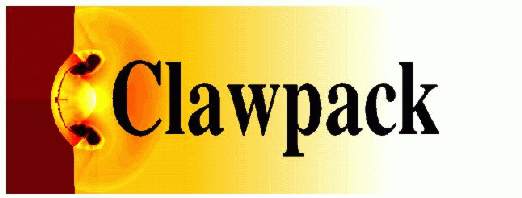|
cellave.f.html |
 |
|
Source file: cellave.f
|
|
Directory: /home/rjl/git/rjleveque/clawpack-4.x/clawpack/2d/lib
|
|
Converted: Sun May 15 2011 at 19:15:43
using clawcode2html
|
|
This documentation file will
not reflect any later changes in the source file.
|
c
c
c
c
c =================================================
subroutine cellave(xlow,ylow,dx,dy,wl)
c =================================================
implicit double precision (a-h,o-z)
external fss
logical fl(5),alll,allr
dimension x(10),y(10),xx(5),yy(5)
common/fsscorn/ xc0,yc0,xc1,yc1
c
c # compute wl, fraction of cell that lies in left state.
c # For initial data with two states ql and qr separated by a
c # discontinuity. The curve along which the discontinuity lies is
c # specified by the function fdisc, which should return a value that
c # is negative on the side where ql lies and positive on the qr side.
c
c # xlow,ylow is the coordinate of the lower left corner of the cell.
c # dx, dy are grid spacing in x and y.
c
xx(1) = xlow
xx(2) = xlow
xx(3) = xlow+dx
xx(4) = xlow+dx
xx(5) = xx(1)
yy(1) = ylow
yy(2) = ylow+dy
yy(3) = ylow+dy
yy(4) = ylow
yy(5) = yy(1)
alll = .true.
allr = .true.
c
do 20 i=1,4
fl(i) = fdisc(xx(i),yy(i)) .lt. 0.d0
alll = alll .and. fl(i)
allr = allr .and. (.not. fl(i))
20 continue
fl(5) = fl(1)
c
if (alll) then
wl = 1.d0
return
endif
if (allr) then
wl = 0.d0
return
endif
c
iv = 0
do 40 i=1,4
if (fl(i)) then
iv = iv+1
x(iv) = xx(i)
y(iv) = yy(i)
endif
if (fl(i).neqv.fl(i+1)) then
iv = iv+1
xc0 = xx(i)
yc0 = yy(i)
xc1 = xx(i+1)
yc1 = yy(i+1)
ss = zeroin(0.d0, 1.d0, fss, 1d-8)
c write(27,*) 'xc,yc,ss:',xc0,yc0,xc1,yc1,ss
x(iv) = xx(i) + ss*(xx(i+1)-xx(i))
y(iv) = yy(i) + ss*(yy(i+1)-yy(i))
endif
40 continue
c
c # compute area:
c
if (iv.eq.0) then
wl = 0.d0
return
endif
c
x(iv+1) = x(1)
y(iv+1) = y(1)
area = 0.d0
do 50 i=1,iv
area = area + .5d0*(y(i)+y(i+1))*(x(i+1)-x(i))
c write(27,*) ' x,y:',x(i),y(i)
50 continue
c
wl = area / (dx*dy)
c write(27,*) 'area,wl:',area,wl
c
return
end
c
c
c
c
c
c =================================================
function fss(s)
c =================================================
implicit double precision (a-h,o-z)
common/fsscorn/ xc0,yc0,xc1,yc1
c
c # compute fdisc at distance s between corners (xc0,yc0) and (xc1,yc1)
c
x = xc0 + s*(xc1-xc0)
y = yc0 + s*(yc1-yc0)
fss = fdisc(x,y)
return
end
c
c
c
c =================================================
function zeroin(ax,bx,f,tol)
c =================================================
implicit double precision (a-h,o-z)
external f
c
c a zero of the function f(x) is computed in the interval ax,bx .
c (Standard routine from netlib)
c
c input..
c
c ax left endpoint of initial interval
c bx right endpoint of initial interval
c f function subprogram which evaluates f(x) for any x in
c the interval ax,bx
c tol desired length of the interval of uncertainty of the
c final result ( .ge. 0.d0)
c
c
c output..
c
c zeroin abcissa approximating a zero of f in the interval ax,bx
c
c
c it is assumed that f(ax) and f(bx) have opposite signs
c without a check. zeroin returns a zero x in the given interval
c ax,bx to within a tolerance 4*macheps*dabs(x) + tol, where macheps
c is the relative machine precision.
c
c this function subprogram is a slightly modified translation of
c the algol 60 procedure zero given in richard brent, algorithms for
c minimization without derivatives, prentice - hall, inc. (1973).
c
c
c
c compute eps, the relative machine precision
c
eps = 1.d0
10 eps = eps/2.d0
tol1 = 1.d0 + eps
if (tol1 .gt. 1.d0) go to 10
c
c initialization
c
a = ax
b = bx
fa = f(a)
fb = f(b)
c
c begin step
c
20 c = a
fc = fa
d = b - a
e = d
30 if (dabs(fc) .ge. dabs(fb)) go to 40
a = b
b = c
c = a
fa = fb
fb = fc
fc = fa
c
c convergence test
c
40 tol1 = 2.d0*eps*dabs(b) + 0.5*tol
xm = .5*(c - b)
if (dabs(xm) .le. tol1) go to 90
if (fb .eq. 0.d0) go to 90
c
c is bisection necessary
c
if (dabs(e) .lt. tol1) go to 70
if (dabs(fa) .le. dabs(fb)) go to 70
c
c is quadratic interpolation possible
c
if (a .ne. c) go to 50
c
c linear interpolation
c
s = fb/fa
p = 2.d0*xm*s
q = 1.d0 - s
go to 60
c
c inverse quadratic interpolation
c
50 q = fa/fc
r = fb/fc
s = fb/fa
p = s*(2.d0*xm*q*(q - r) - (b - a)*(r - 1.d0))
q = (q - 1.d0)*(r - 1.d0)*(s - 1.d0)
c
c adjust signs
c
60 if (p .gt. 0.d0) q = -q
p = dabs(p)
c
c is interpolation acceptable
c
if ((2.d0*p) .ge. (3.d0*xm*q - dabs(tol1*q))) go to 70
if (p .ge. dabs(0.5*e*q)) go to 70
e = d
d = p/q
go to 80
c
c bisection
c
70 d = xm
e = d
c
c complete step
c
80 a = b
fa = fb
if (dabs(d) .gt. tol1) b = b + d
if (dabs(d) .le. tol1) b = b + dsign(tol1, xm)
fb = f(b)
if ((fb*(fc/dabs(fc))) .gt. 0.d0) go to 20
go to 30
c
c done
c
90 zeroin = b
return
end

